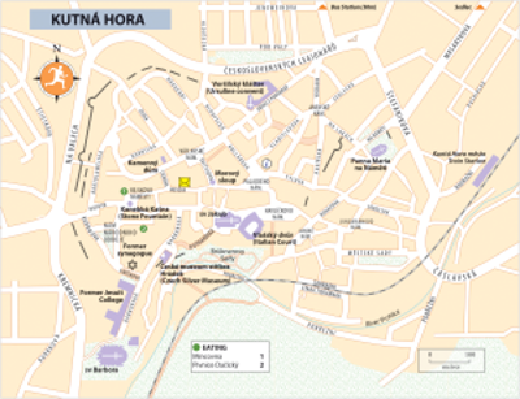Travel Reference
In-Depth Information
Brief history
KutnáHora'sroadtoprosperitybeganinthelatethirteenthcenturywiththediscoveryofcop-
perand
silverdeposits
inthesurroundingarea.Duringthe“silverrush”Germanminerswere
invited to settle and work the seams, and in around 1300 Václav II founded the royal mint
here and sent for Italian craftsmen to run it. It was here that the famous
Prague groschen
(
pražské groše
) was struck, a currency that spread across central Europe because of its stable
and reliable silver content. Many of these groschen were used to fund the beautification of
Prague,buttheyalsoenabledconstructionofoneofthemostmagnificent churchesincentral
Europe and a number of other prestigious Gothic monuments in Kutná Hora itself.
AtthetimeoftheHussiteWars,thetownwasmostlyGerman-speakingandstaunchlyCath-
olic; local miners used to throw captured Hussites into the deep mine shafts and leave them
todieofstarvation.Wordgotout,andthetownwasbesiegedandeventuallytakenbyŽižka's
fanatical Táborites in 1421, only to be recaptured by Sigismund and his papal forces shortly
afterwards, and again by Žižka the following year.
While the silver stocks remained high the town was able to recover its former prosperity,
but at the end of the sixteenth century the mines dried up and Kutná Hora's wealth and im-
portance came to an abrupt end - when the Swedes marched on the town during the Thirty
Years' War, they had to be bought off with beer rather than silver. The town has never fully
recovered, shrivelling to less than a third of its former size, its fate emphatically sealed by a
devastating fire in 1770.
Vlašský dvůr (Italian Court)
Havlíčkovo náměstí 552 • Guided tours only: daily: March & Oct 10am-5pm; April-Sept 9am-6pm; Nov-Feb
10am-4pm • 85Kč • 327 512 873


